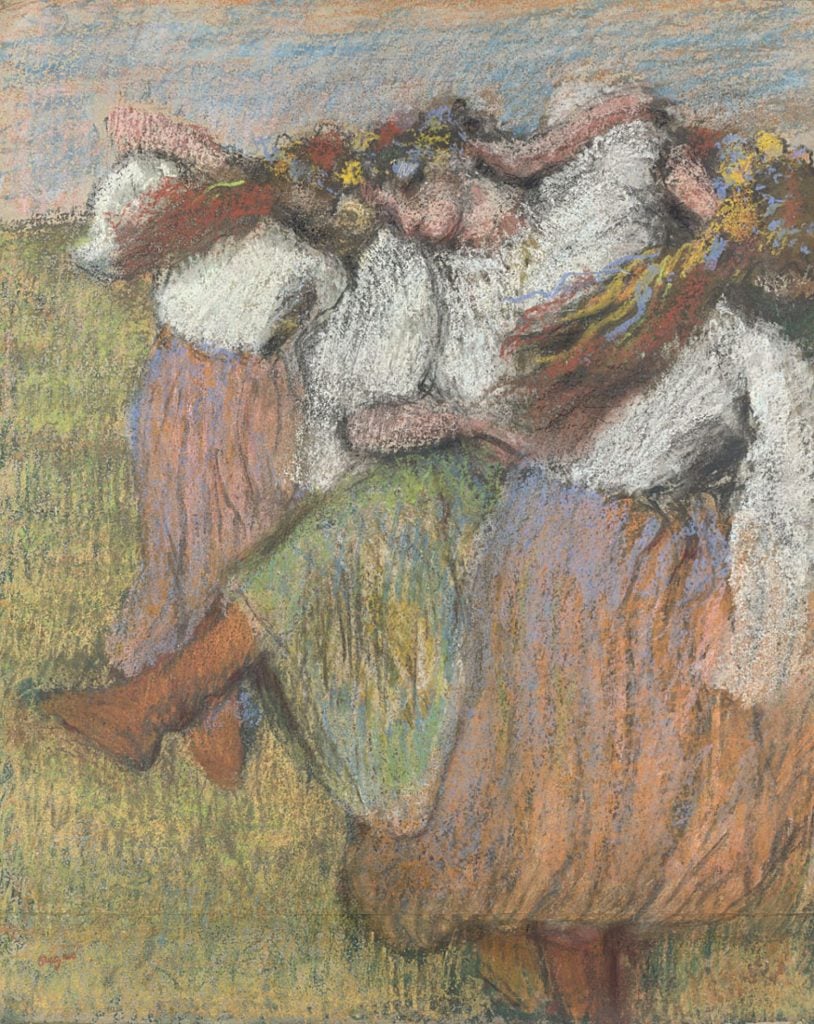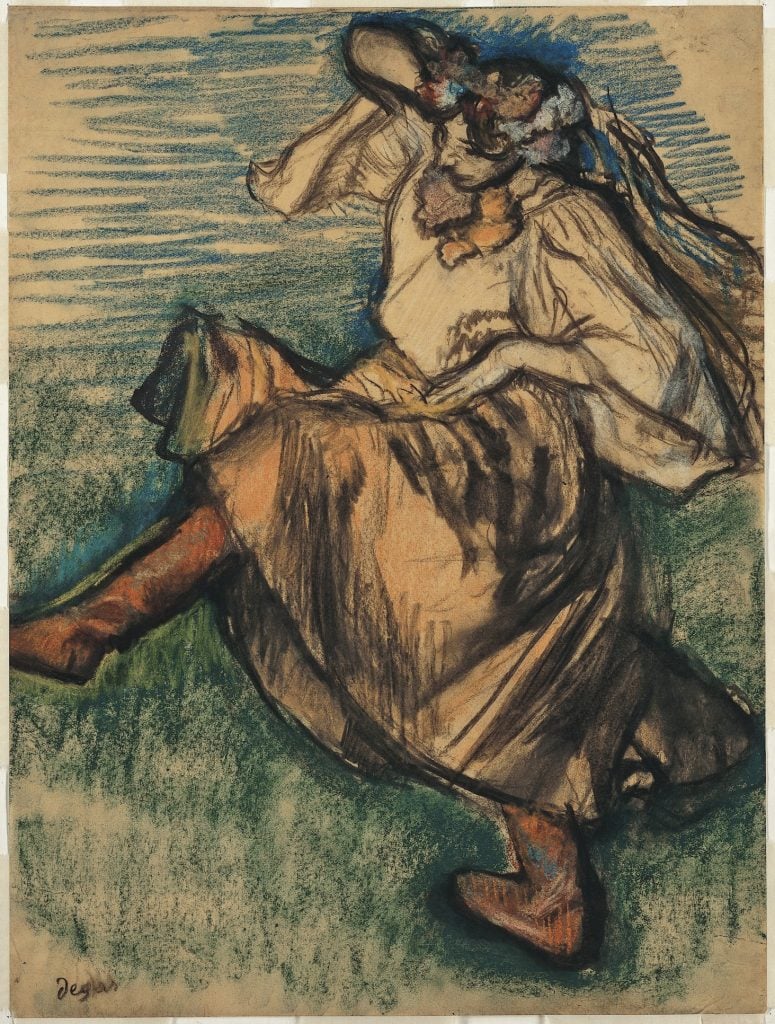Museums & Institutions
London’s National Gallery Renames Its Degas Painting, Formerly Known as ‘Russian Dancers,’ as ‘Ukrainian Dancers’
Many are calling on cultural institutions to rethink generalizations about Russian art.

Many are calling on cultural institutions to rethink generalizations about Russian art.

Caroline Goldstein

The National Gallery in London has changed the title of an Edgar Degas drawing in its collection from Russian Dancers to Ukrainian Dancers. The change, which came after pressure on social media, reflects an ongoing push for institutions to be more precise in their characterizations of Ukrainian and Russian culture.
The accuracy of the title “has been an ongoing point of discussion for many years,” the National Gallery told the Guardian, adding that an increase in focus since Russia invaded Ukraine prompted officials to “update the painting’s title to better reflect the subject.”
Degas likely encountered the dance troupe when it was performing near the artist’s home in Paris at venues including the Moulin Rouge and the Folies-Bergère. In the painting, the figures are outlined loosely so that they appear in motion, with legs elevated mid-stride.
The dancers have long hair decorated with ribbons in the Ukrainian national colors of blue and yellow; their traditional folk costumes identify them as peasant dancers, not the classically trained ballerinas that appear in many of Degas’s works. The artist described this series, which he completed around 1899, as “orgies of color” that captured the unfettered spirit of the performers.
Tanya Kolotusha, a Ukrainian living in London, posted Degas’s painting on Instagram with a caption noting that Russia was and still is “appropriating many elements of Ukrainian culture.” The National Gallery responded directly in the comments to inform her that the title had been updated. The work is not currently on view.

Edgar Degas, Russian Dancer (1899) in the Metropolitan Museum of Art’s collection.
Historians have noted that titles and framing have often been used as a tool to consolidate Russian influence. Olesya Khromeychuk, an historian and director of the London-based Ukrainian Institute, wrote, “Putin has one of the largest armies in the world, but he has other weapons too. Culture and history take a prominent place in his arsenal.”
Khromeychuk, whose brother was killed in 2017 by shrapnel, noted that “every trip to a gallery or museum in London with exhibits on art or cinema from the USSR reveals deliberate or just lazy misinterpretation of the region as one endless Russia; much like the current president of the Russian Federation would like to see it.”
Both the Metropolitan Museum in New York and the Museum of Fine Arts, Houston, have pastels by Edgar Degas titled Russian Dancer in their collections, and the Getty Museum staged the exhibition “Degas: Russian Dancers and the Art of Pastel” in 2016.
Neither the Met nor the MFA Houston institution responded to inquiries regarding a future name change by press time.